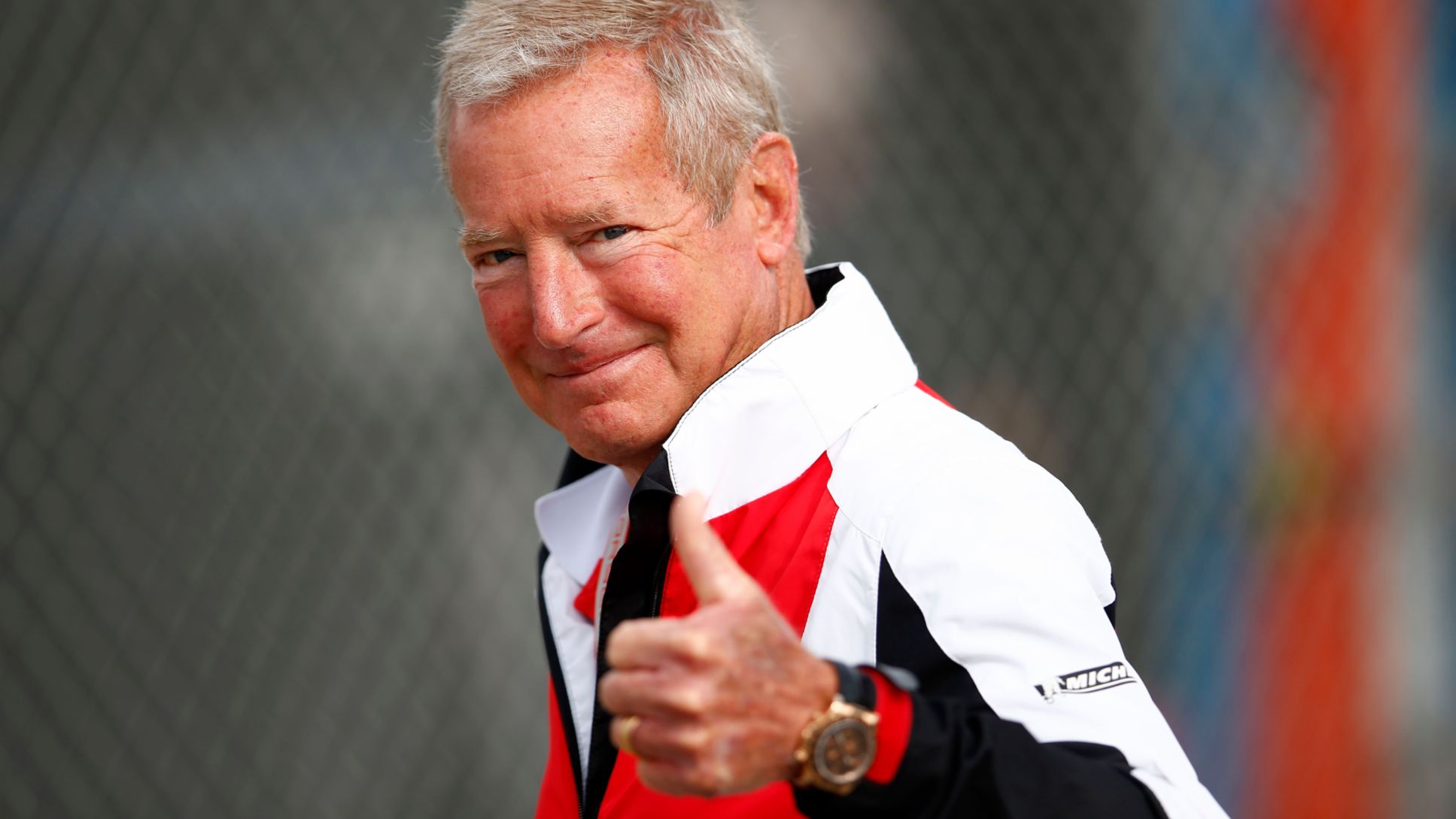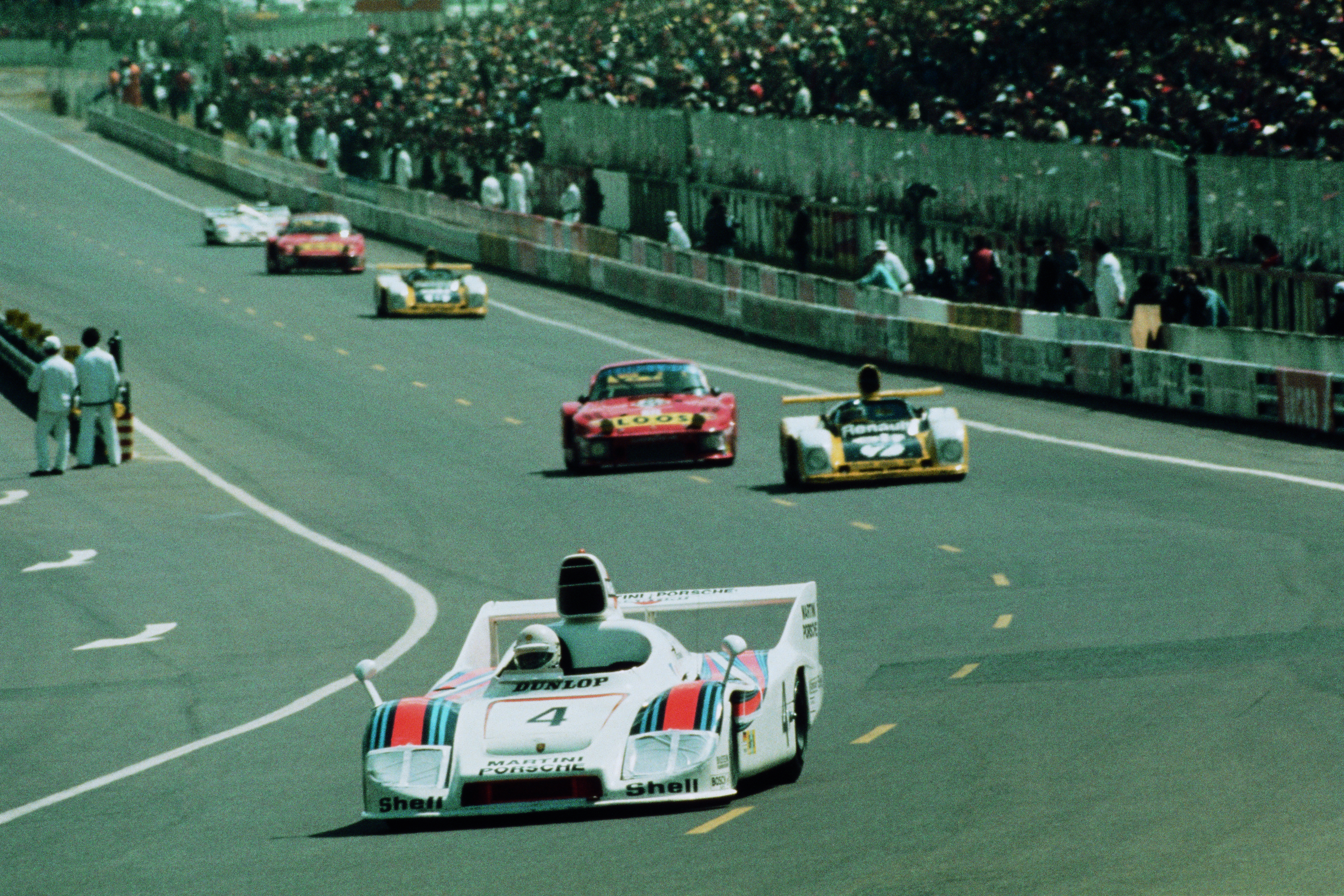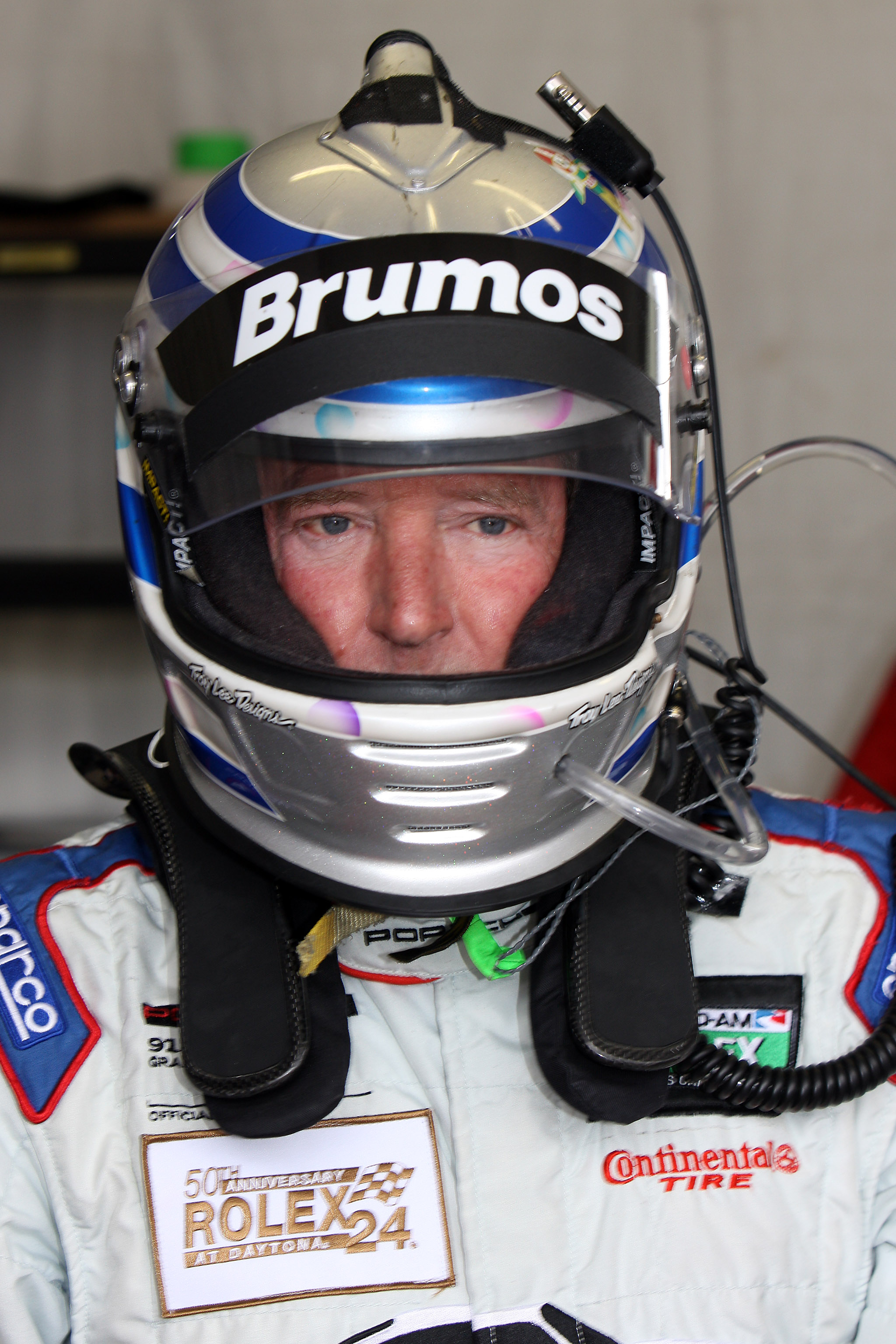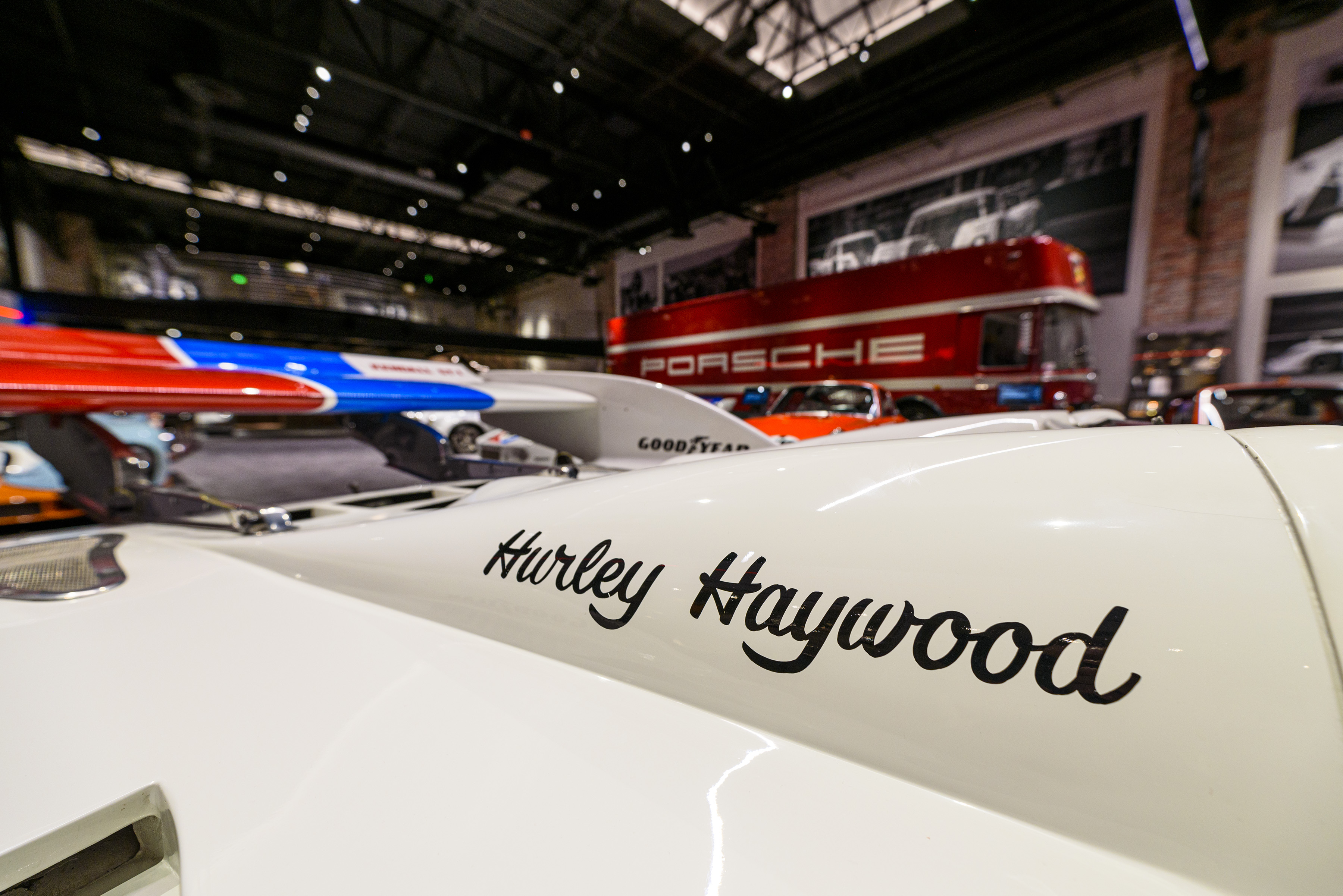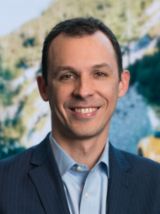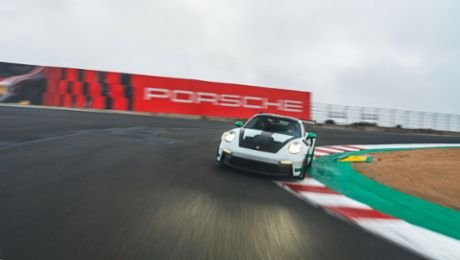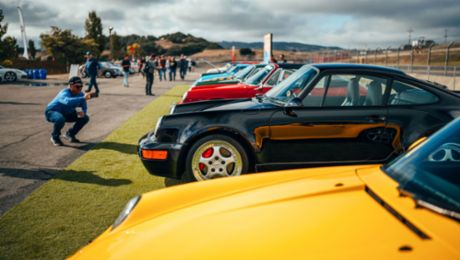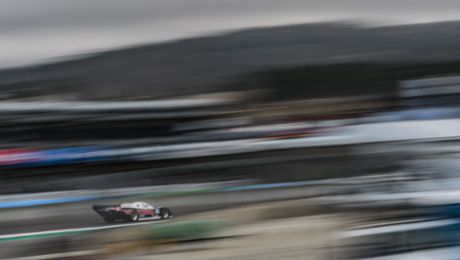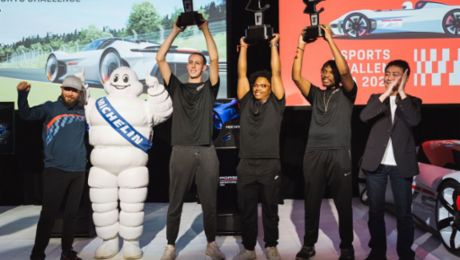Atlanta. Few Americans are more synonymous with Porsche than Hurley Haywood. Recognized universally as one of the greatest endurance sports car racers of all time, his career came almost exclusively in cars built by the German sports car manufacturer. That success has provided him a platform as a great emissary for the sport and of the brand. It is a role which the resident of St. Augustine, Florida carries naturally and with class.
“I never dreamed in a million years that it would turn into what it has,” reflected Haywood just days past his 75th birthday. “Without Porsche and without Peter [Gregg], I never would have been here. My third year of racing I won the 24 Hours of Daytona and backed that up with a Sebring win a few months later. That wouldn’t have happened had I not aligned myself with Porsche for the rest of my career.”
Most American
A child of the Midwest, Haywood’s career with the German marque would actually be sparked by the most American of cars.
“I loved cars when I was a kid,” offered Haywood while between business calls at his Florida home. “My first Porsche memory was of my uncle driving a 356 Cabriolet across the lawn at my parent’s house. I was maybe six years old and I remember that car so clearly. It was green with brown seats. I can recall sitting in it and running my hand over the body. It was beautiful and I fell in love with that car.”
“The love of cars didn’t translate into me wanting to become a race car driver though,” continued the five-time 24 Hours of Daytona champion. “Driving was something I really loved, and I was pretty good. When I went to college in Florida, I had a high horsepower Corvette and that is when I met Peter Gregg. I went to an autocross just to drive the car and Peter was there in a Porsche. I beat him and he wanted to know who this kid in the Corvette was. He convinced me to do a test on a track. The plan was he was going to show me how to drive. At the end of the day, I was quicker than he was.”
The man who would go on to become the first driver to win the 24 hour races at Daytona and Le Mans in the same year (1977) was now on his path. The ascent, guided by the man known in the racing world as “Peter Perfect” Gregg, would be quick, focused and successful. Gregg wasted little time getting Haywood a Porsche of his own and even less time throwing him into the deep waters of international competition.
Even today, when asked, there is an obvious spark in his eye when Haywood mentions his first Porsche and introduction to endurance racing. “The first Porsche I raced was in 1969,” he said. “It was a 911 that I owned. Peter helped me order the car from Porsche and he got all the internals from the racing department. We took that car to Watkins Glen for the Six Hour. All we had done was a pre-test at Roebling Road in Savannah [Georgia] and one or two regional races with the car. Nothing close to anything at the degree of the Six Hours of Watkins Glen. No one would ever be allowed to do that today. It was pretty intimidating to be passed down the straightaway by a Porsche 917 and a Ferrari 512 on the right and left. All I could think was ‘holy cow what am I doing here?’ But Peter and I won the class that day.”
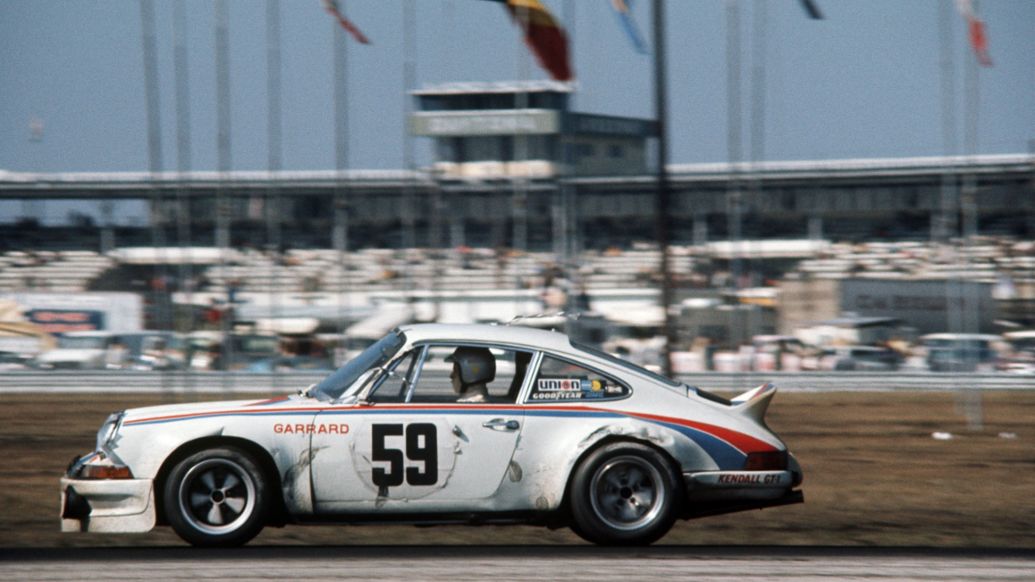
American hero
In 1969, Hurley Haywood was on top of the world. He was planning his future piloting Porsche race cars with mentor Gregg. But, like many of his generation, the Chicago-native would be brought to earth by the realities of the world. He received his draft notice and was off to Vietnam before he could turn another wheel in a race car.
Fortunately for the racing world, Haywood returned from active duty safely in November 1970. Following his tour of duty, he was stationed at Fort Lee in Virginia and, while still enlisted in the U.S. Army, returned to driving with Brumos Racing in a Porsche 914-6. Haywood and Gregg shared the Tangerine Orange Porsche at Virginia International Raceway in April, shocking those assembled by earning the pole position in the GTU class and winning overall against much higher horsepower machines. That marked history as the first IMSA road race ever held.
The success made it onto the pages of the base newspaper at Fort Lee. This put Haywood, who was on weekend leave each time he raced, in a delicate place with the Army brass.
“I was rotating out of the Army and the base was close to VIR,” continued the all-time leader in major international endurance race victories. “My commanding officer was at the race that day. He didn’t know I was running in it, he just happened to go to the track that weekend to watch. He called me into his office and said what can we do to get you out of here so you can get back in the saddle? He didn’t do anything to speed up my discharge, but he sure didn’t do anything to stand in the way of it either.”
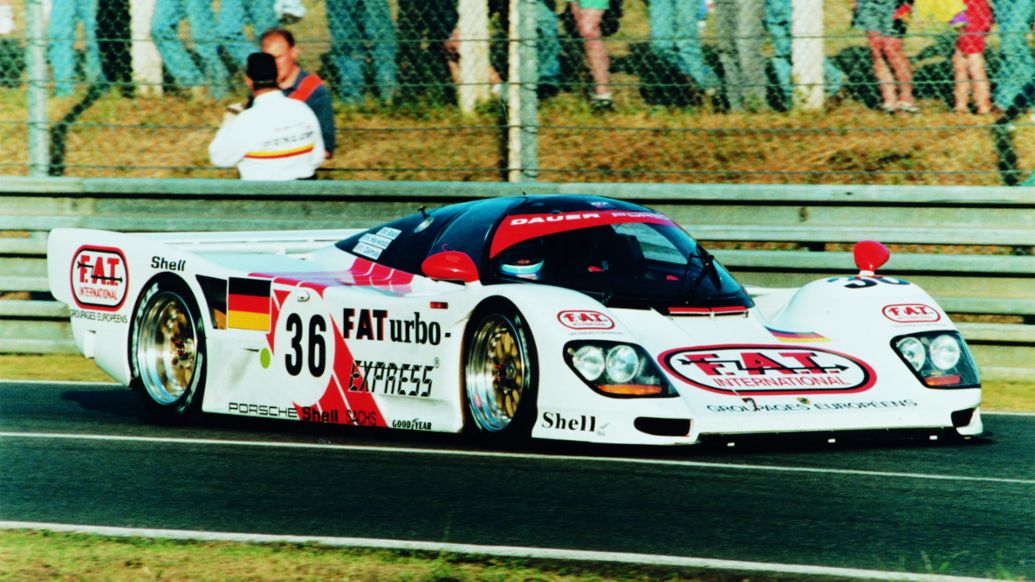
Haywood was out of his fatigues and in his racing suit fulltime at the start of the 1972 race season at Daytona.
Welcome to Le Mans
Haywood would go on to win the 24 Hours of Le Mans three times (1977, ’83 and ’94). But when he started in 1977 driving the prototype icon of its time, the Porsche 936, he came with next to no knowledge of the track. This was a time of a 3.7-mile long Mulsanne Straight with no speed abating chicanes – nearly half of the 8.476-mile long track – allowing cars to approach 230 mph.
“My only connection to Le Mans was the movie Le Mans,” chuckled Haywood. “All the guys, Jürgen Barth, Jacky Ickx, were helpful in me getting my head around Le Mans with no practice. There was no pre-test at that time, definitely no sims or video to study. You went in blind and learned, mostly at dusk, the week of the race. The Mulsanne Straight was a time you could relax a little but even though you were traveling at over 200 mph. The cars were very stable and so your brain just accelerates to accept all the visual things that are coming at you at 200 mph. You would pass a Porsche 911 like he was tied to a tree. So, you just prayed the guy saw you and gave you the room that you needed.”
Hurley time
The 1970s was just the start of Haywood’s time on the stage. Each year for the next four decades, he was in the spotlight as his name remained at the top of the timesheets piloting Porsche race cars.
He is among the all-time winners of endurance classics with 10 victories across the major events including five at Daytona, three at Le Mans and twice at Sebring. He is a 1971 and 1972 IMSA GT champion, IMSA SuperCar Champion (‘91), North American GT Endurance Champion (’94), SCCA Trans-Am (’88), Norelco Cup champion (three-times) and is in the Florida Sports Hall of Fame, Motorsports Hall of Fame of America (2005), Sebring Hall of Fame and Watkins Glen's prestigious 'Legends of the Glen'.
Bridging the gap
Today, Haywood is seen as a legend. But there was a time when he was the new guard, a bridge between the Gmund shop and the Weissach technical center. Haywood is a very public face in Porsche motorsport history. He worked in step with veterans of the brand like Alwin Springer and tutored up-and-comers like a young Patrick Long.
The next Hurley Haywood
Haywood is so ingrained in the Porsche culture in North America and his work ethic so strong, the prospect of his retiring from the cockpit was rarely considered. Hurley embodied Porsche in the United States and no heir apparent was on the horizon until he received a phone call from Bob Carlson, then head of Public Relations for Porsche Cars North America and Porsche Motorsport.
“Bob called me and said, ‘I want you to take a look at this new kid that is in the Junior program at Porsche’,” responded Haywood when asked about the first time he heard the name Patrick Long. “The Porsche factory drivers were doing a fitness camp here in Florida. All the team went out to dinner and Bob made sure I was sitting next to Pat. Patrick was kind of intimidated at first. When he finally loosened up he said to me: ‘I know you have had a long career with Porsche, are there any secrets you can tell me?’ I responded ‘drive as fast as you can go and keep your mouth shut.’ Your job as a driver is to figure out what the car is doing and let the engineers fix it.”
Running cool
If anyone epitomized the reason to heed Haywood’s advice, it is Long’s fellow Porsche Rennsport Reunion co-Grand Marshal, Alwin Springer. The veteran Porsche engineer was a no nonsense leader that even had Haywood following his own counse
-has-been-a-part-of-every-Porsche-Rennsport-Reunion.jpg/jcr:content/Hurley%20Haywood%20%20(center)%20has%20been%20a%20part%20of%20every%20Porsche%20Rennsport%20Reunion.jpg)
“Alwin was a hard character to deal with,” laughed Haywood. “It was either Alwin’s way or hit the road. When we were racing the IMSA SuperCar Championship with Porsche in 1991, we took the cars to Savanah to test. I did some laps and pulled into pit lane to talk about the car. Alwin leaned in to ask a question and this cool refreshing air came rolling out into the heat and humidity. Alwin didn’t know what to think. He just yelled at me ‘unless I tell you to turn on the air conditioner, don’t turn it on!’ but with a few expletives added. I thought it was funny but he was actually pretty mad. The next race the AC was gone.”
A motorsport family reunion
It is a small group of people who have attended all six previous Porsche Rennsport Reunions. It is an even smaller group that attended the prototype event. Haywood, not surprisingly, is one of those few. The world’s largest gathering of Porsche enthusiasts was conceived by Carlson with driving legend and historic racing pioneer Brian Redman in the late 1990s.
“I have been to all of the Rennsport Reunions including the prototype which was at Watkins Glen a year or two before Lime Rock hosted Rennsport Reunion One in 2001. Bob Carlson put that together with Brian Redman and everyone just loved it. That was the seed that planted the entire thing. The first year, it was bigger than we thought it would be. They had to close the gates at Lime Rock because they couldn’t fit anyone else onto the property.”
Haywood continued unprompted, echoing the sentiment to most who attend the event: “Rennsport is like a family all coming together. The general fan can walk up to any one of the drivers and just start asking questions. That is the core of what has made Rennsport Reunion so successful. Everyone is willing to talk.
Rennsport Reunion Seven is going to be just phenomenal, Laguna is the perfect venue for it. The track creates a great atmosphere. Everyone enjoys that festive mood.”
